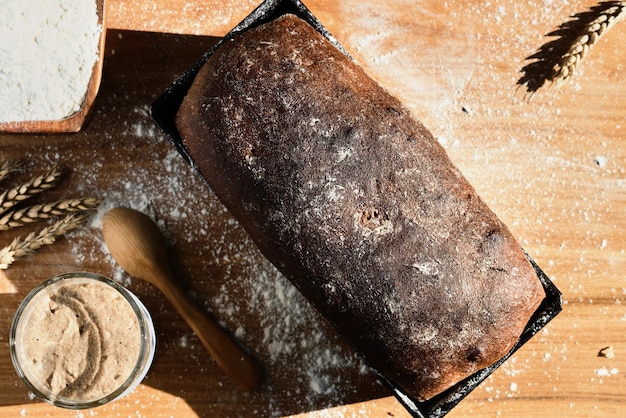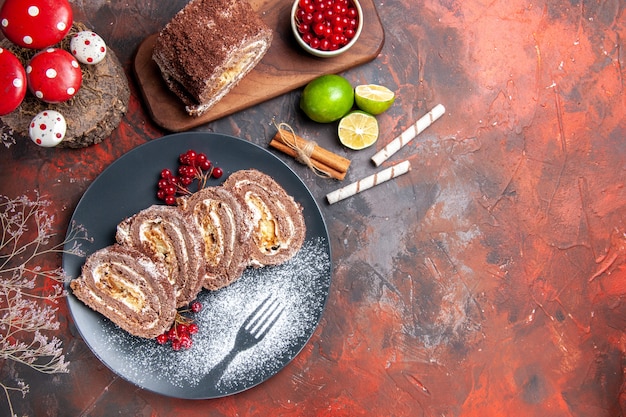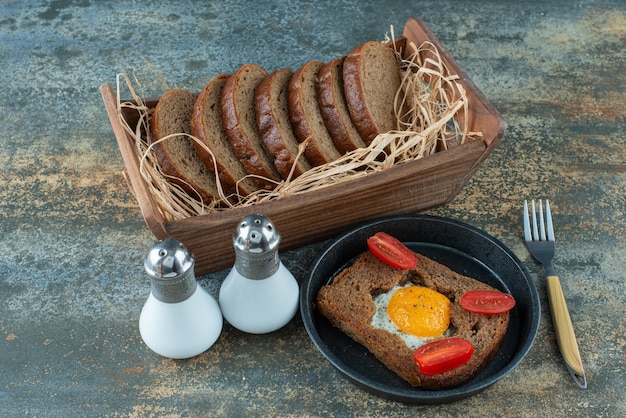(Part 1) The Meatloaf Myth: Unmasking the Baking Time

Factors That Influence meatloaf baking time
The truth is, baking time for a meatloaf is not solely determined by weight. It's a delicate dance between several key variables: Oven Variations: Just like every person is unique, every oven has its own personality. Some ovens run hot, others run cool. So, even if you're using a tried-and-true recipe, your baking time might need a slight adjustment based on your oven's quirks. Shape and Size: A long, slender loaf takes longer to cook through than a compact, round one. Imagine the difference in heat distribution! The long loaf needs time for heat to penetrate all those nooks and crannies. Meat Mix: A meatloaf packed with vegetables, breadcrumbs, or other fillers requires more time to cook than one with a simpler meat mixture. Those extra ingredients act as little heat insulators, slowing down the cooking process. Meat Quality: Even the type of meat you use can impact the baking time. Leaner meats tend to cook faster than fattier ones. This is because fat acts as a heat insulator, slowing down the cooking process.The Temperature Game: 350 Degrees, But Not Always
While 350 degrees fahrenheit (175 degrees Celsius) is the classic baking temperature for meatloaf, it's not a hard and fast rule. Think of it as a starting point. Depending on your oven and the specific meatloaf you're making, you might need to adjust the temperature slightly.Don't be afraid to experiment! If you notice your oven runs a bit hot, consider lowering the temperature to 325 degrees. Or, if you have a smaller loaf and want a crispier crust, you could even try baking at 400 degrees for a shorter time. The key is to find that sweet spot where your meatloaf cooks evenly and beautifully.
(Part 2) The Meatloaf’s Inner Core: The Importance of Doneness

The Meatloaf’s Telltale Signs: Clues to Doneness
While a meat thermometer is the most reliable way to determine doneness, here are some visual and olfactory cues to guide you: The Colour: The top of your meatloaf should be a beautiful golden brown, indicating that the meat has reached a good temperature. Think of it as a sign that the meat has been kissed by the heat. The Texture: A fully cooked meatloaf will feel firm to the touch. Gently press the surface; it should feel stable, not wobbly or jiggly. This firmness is a sign that the meat has cooked through. The Smell: As your meatloaf bakes, it will release a wonderful aroma that fills your kitchen with pure comfort. If you're unsure about doneness, trust your nose.The Thermometer: A Reliable Meatloaf Ally
Chefs swear by them for a reason! A meat thermometer is the most accurate way to determine if your meatloaf is cooked through. Insert the thermometer into the thickest part of the loaf, making sure to avoid any bone or fat.If you don't have a thermometer, don't fret. The trusty toothpick test is a decent alternative. Stick a toothpick into the centre of the loaf. If it comes out clean, your meatloaf is ready. If it's still a bit pink or moist, give it a few more minutes in the oven.
(Part 3) Time is of the Essence: Determining the Baking Time

The General Rule: A Starting Point for Baking
As a general guideline, a 2lb meatloaf should bake for approximately 1 hour and 15 minutes at 350 degrees Fahrenheit. But remember, this is just a starting point. Your actual baking time might be slightly shorter or longer, depending on those factors we discussed earlier.The Ultimate Test: Checking for Doneness
The best way to ensure your meatloaf is cooked through is to check its internal temperature. Use a meat thermometer to measure the temperature in the thickest part of the loaf. Once it reaches 160 degrees Fahrenheit (71 degrees Celsius), your meatloaf is ready to shine!Beyond the Hour and 15 Minutes: A Guide to Adjustments
Here's a breakdown of how to adjust baking time based on your specific meatloaf:- Smaller Loaf: If you're baking a smaller meatloaf, for example, 1.5lbs, you might only need to bake it for 1 hour.
- Larger Loaf: A larger meatloaf, perhaps 2.5lbs, will likely require an extra 15-20 minutes of baking time.
- Dense Meatloaf: If your recipe calls for extra veggies or fillers, or if you're using a denser meat mix, you might need to add a few extra minutes to the baking time.
- Lean Meat: If you're using leaner meats, your meatloaf might cook faster. It's better to check for doneness a little earlier than expected.
(Part 4) The Meatloaf’s Resting Period: A Crucial Step
Just like a marathon runner needs to cool down after a race, your meatloaf needs a little rest before you slice it. This resting period allows the juices to redistribute throughout the loaf, resulting in a more tender and flavorful meatloaf.Resting Time: Patience is a Virtue
Allow your meatloaf to rest for about 10-15 minutes after taking it out of the oven. Cover it loosely with foil to prevent it from drying out.Resting Benefits: A Culinary Transformation
Juicy and Tender: The resting time allows the juices to redistribute, creating a more tender and juicy meatloaf. Imagine those delicious juices pooling at the bottom of the loaf, now evenly distributed throughout! Easier Slicing: Letting the meatloaf cool slightly makes it easier to slice without crumbling. You'll get beautiful, even slices, perfect for serving. Enhanced Flavour: The resting period allows the flavours to meld together, enhancing the overall taste. Those ingredients have had time to get acquainted, creating a symphony of flavors.(Part 5) The Art of Glazing: A Touch of Sweetness and Shine
While not essential, a glaze can elevate your meatloaf from good to incredible. It adds a beautiful shine and a touch of sweetness or savory richness, transforming it into a culinary masterpiece.Glazing Options: A Delicious Spectrum of Flavours
Sweet Glaze: A simple honey or maple syrup glaze can add a touch of sweetness and a beautiful golden brown finish. It's like a warm embrace for your meatloaf, adding a touch of indulgence. Savoury Glaze: A tangy tomato ketchup or Worcestershire sauce glaze can add a depth of flavour and a rich, glossy coating. It's perfect for those who prefer a more savory touch. Herbed Glaze: A blend of fresh herbs, like parsley, rosemary, or thyme, can elevate the flavour profile and add a vibrant touch. Think of it as a burst of freshness and complexity.Glazing Time: The Finishing Touch
Apply the glaze during the last 15-20 minutes of baking. This will allow it to caramelize and create a delightful crust. It's like a final act of love for your meatloaf, adding a touch of magic.(Part 6) The Meatloaf’s Accompaniments: The Perfect Pairing
Now, let's talk about those delicious side dishes that perfectly complement your meatloaf. They're like the supporting cast that elevates the main act.Classic Choices: The Standbys
mashed potatoes: A classic pairing, mashed potatoes provide a creamy and comforting counterpoint to the meatloaf. It's a classic for a reason – a comforting hug in every bite. green beans: The bitterness of green beans balances the richness of the meatloaf, creating a well-rounded meal. They bring a touch of freshness and a contrast of flavors. Gravy: A rich and flavorful gravy can elevate the entire dish, adding moisture and extra flavour to the meatloaf and vegetables. Think of it as a luxurious sauce that brings everything together.Beyond the Basics: Adding Variety
Roasted Vegetables: Roasted vegetables, like carrots, broccoli, or Brussels sprouts, bring a sweetness and depth of flavor to the plate. It's a vibrant and healthy addition to the meal. Salad: A fresh salad can add a lightness and refreshing touch to the meal. It's a perfect way to balance the richness of the meatloaf. Cornbread: The sweetness of cornbread complements the savory flavors of the meatloaf. It's a delightful combination of textures and flavors.(Part 7) The Meatloaf’s Legacy: From Oven to Table
The journey of your meatloaf is a testament to patience and culinary craft. It's not just a dish; it's a story waiting to be told.The Meatloaf’s Transformation: From Humble Beginnings to Culinary Delight
The Mixing Bowl: The journey begins with the mingling of ingredients, a symphony of flavours coming together in a single bowl. It's a moment of anticipation, where flavors are brought together to create something new. The Baking Dish: The meatloaf finds its shape, taking on a form that promises deliciousness. It's the moment when the ingredients begin to take on a shape that hints at the delightful outcome. The Oven: The magic happens here, the heat transforming the ingredients into a culinary masterpiece. It's a time of transformation, where the flavors develop and the texture becomes perfect. The Table: Finally, your meatloaf takes its place as the centrepiece of a meal, ready to be devoured and enjoyed. It's the culmination of your efforts, ready to be shared and savored.The Meatloaf’s Legacy: A Timeless Tradition
Meatloaf is more than just food; it's a symbol of comfort, tradition, and family. It's a dish that evokes childhood memories and brings people together around the table. It's a timeless tradition that continues to bring joy to families around the world.(Part 8) Meatloaf Masterclass: Final Words of Wisdom
Remember, the key to a delicious meatloaf lies in understanding the science behind the baking process. It's about knowing your oven, understanding the importance of doneness, and respecting the power of time.meatloaf tips and Tricks: Elevating Your Skills
Use Quality Meat: The foundation of a great meatloaf is high-quality meat. Choose lean ground beef or a combination of ground beef and pork. Don't be afraid to splurge on good quality meat; it will make a world of difference in the flavor and texture. Don’t Overwork the Meat: Overworking the meat can result in a tough meatloaf. Mix the ingredients gently until they are just combined. Treat your meat with respect and it will reward you with a tender and flavorful meatloaf. Let the Meatloaf Rest: Always let your meatloaf rest before slicing. This will allow the juices to redistribute, resulting in a more tender and flavorful loaf. Patience is key; give your meatloaf a chance to relax and it will reward you. Use a Meat Thermometer: The most accurate way to ensure doneness is to use a meat thermometer. Insert it into the thickest part of the loaf to check the temperature. Don't leave it to chance; use a thermometer for peace of mind. Don’t Be Afraid to Experiment: Don't be afraid to experiment with different flavours and ingredients. Meatloaf is a blank canvas for your culinary creativity. Let your imagination run wild!FAQs: Answering Your Meatloaf Questions
I know you might still have some questions buzzing around, so here are a few common ones I often get asked.
FAQs
How do I prevent my meatloaf from cracking?
Cracking can be a bit of a nuisance, but there are a few ways to avoid it. Firstly, ensure the mixture is moist enough. A dry mixture is more prone to cracking. Think of it as a delicate balance – too dry and it will crack. Secondly, gently press the loaf into the baking dish, avoiding excessive pressing. Be gentle with your meatloaf; let it settle into the pan. Lastly, a simple trick is to create a small indentation in the centre of the loaf before baking. This allows for expansion and reduces the likelihood of cracking.
Can I freeze meatloaf?
Absolutely! Meatloaf freezes beautifully. Simply wrap the cooked loaf tightly in plastic wrap and then again in aluminum foil. You can freeze it for up to 3 months. When ready to eat, thaw it in the refrigerator overnight and reheat it in a preheated oven at 350 degrees until heated through. It's a great way to have a delicious meal ready in a pinch!
What are some creative ways to add flavour to my meatloaf?
The possibilities are endless! You can add chopped vegetables like onions, carrots, or celery to add texture and flavour. Experiment with herbs like parsley, rosemary, or thyme, or try spices like garlic powder, onion powder, or paprika. You can also incorporate dried fruits like cranberries or raisins for a sweet and tangy touch. Let your creativity flow; the possibilities are endless!
What can I do with leftover meatloaf?
Leftover meatloaf is a culinary treasure! You can slice it and serve it cold on sandwiches or salads. It's also delicious diced and added to a hearty pasta dish or as a filling for stuffed peppers. Or, get creative and turn it into a meatloaf hash with mashed potatoes and gravy. Embrace the leftovers; they're a delicious opportunity for a new meal!
Can I bake my meatloaf in a loaf pan?
Yes, you can definitely bake your meatloaf in a loaf pan. In fact, a loaf pan is the most common type of pan used for meatloaf. Just ensure you choose a pan that is the right size for your meatloaf so that it has room to cook evenly. It's a great way to ensure a perfectly shaped meatloaf.
Now you're equipped to conquer the meatloaf, armed with knowledge and confidence. Remember, the journey is as important as the destination. So, grab your ingredients, get your oven ready, and let the meatloaf magic begin!
Everyone is watching

How to Cook Frozen Lobster Tails Perfectly: A Step-by-Step Guide
RecipesLobster. Just the word conjures up images of lavish meals, special occasions, and a taste of luxury. But let's...

Pigs in a Blanket Cooking Time: How Long to Bake for Perfect Results
RecipesAh, pigs in a blanket. Just the name conjures up images of those delightful little parcels of crispy pastry en...

Pork Fillet Cooking Time: How Long to Cook It Perfectly
RecipesPork fillet, or tenderloin as it's sometimes called, is a real favourite in our house. It's so versatile, and...

The Ultimate Guide to Cooking Delicious Frankfurters
RecipesLet's face it, we all love a good frankfurter. It's a classic, simple, and always satisfying. But let's be rea...

The Ultimate Guide to Tender, Juicy Pulled Pork
RecipesRight, let's talk pulled pork. It's one of those dishes that just screams "comfort food," doesn't it? I mean...
